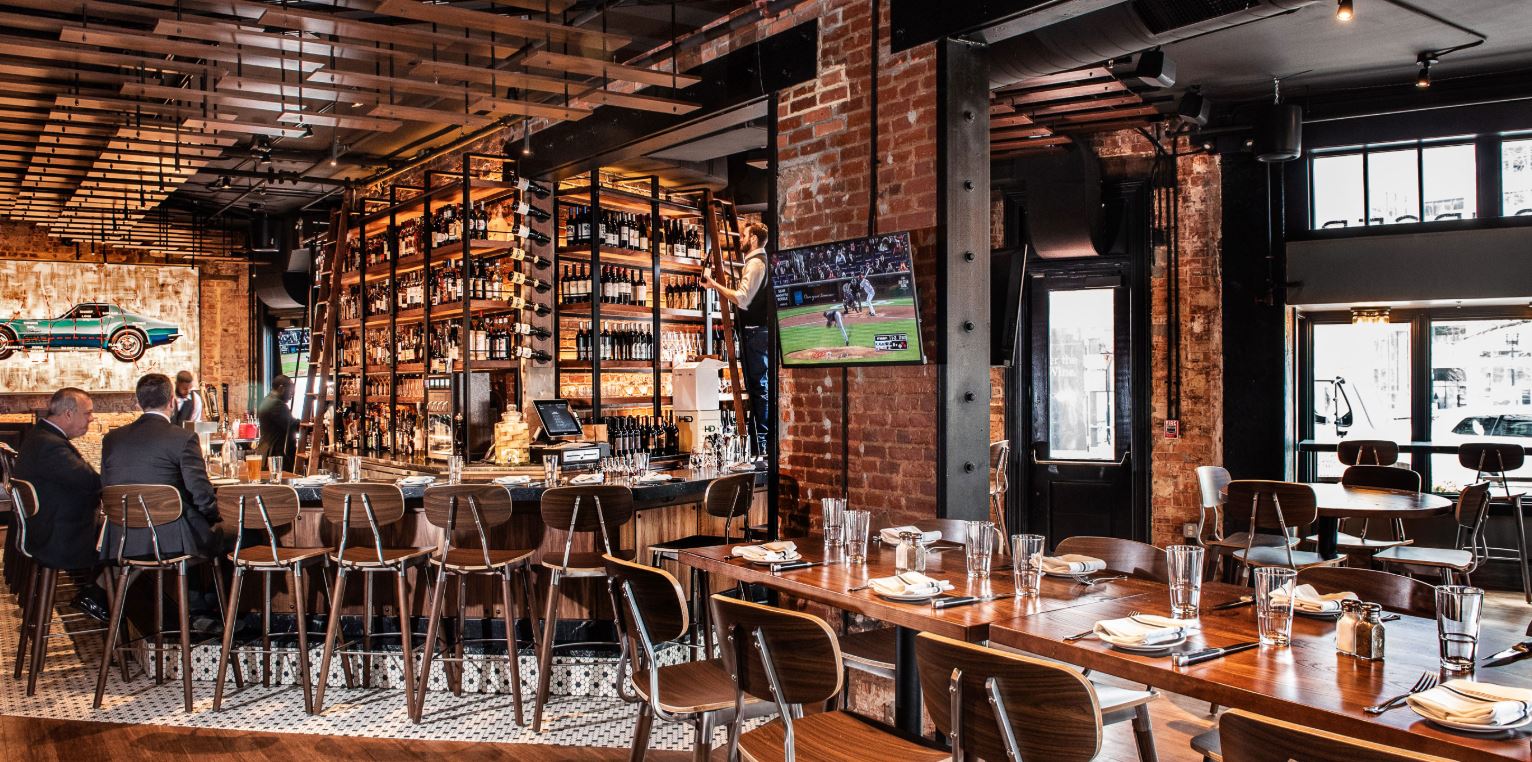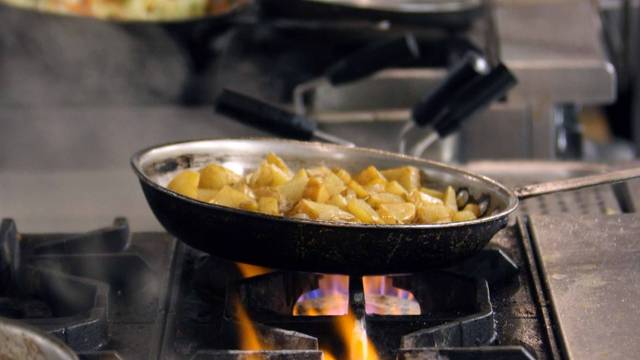Pan Asian Dining Islamabad: Relish Authentic Asian Meals
Pan Asian Dining Islamabad: Relish Authentic Asian Meals
Blog Article
Savor Authentic Oriental Food With a Pan-Asian Twist for a Culinary Journey
Beginning on a culinary journey via authentic Oriental food, boosted with a Pan-Asian twist, provides an unique chance to check out the abundant tapestry of tastes that specify the area's varied cooking traditions. This experience invites you to enjoy the exquisite balance of preferences-- wonderful, salted, spicy, and sour-- integrated by fragrant herbs and spices. Think of the innovative fusion of Thai curry and ramen or the unanticipated delight of sushi burritos. As you ponder these luring recipes, consider the cultural narratives and historic impacts that form them, each bite offering a tale waiting to be found.

Discovering Pan-Asian Tastes
In the realm of global gastronomy, Pan-Asian food sticks out for its exceptional diversity and the harmonious interaction of flavors from various Eastern societies. This cooking technique celebrates the distinct active ingredients and rich traditions discovered across the continent, developing a tapestry of tastes that is both interesting and enjoyable. Trick to Pan-Asian food is its capability to balance different flavors-- sweet, salted, spicy, and sour-- while highlighting the quality and top quality of each active ingredient.
From the umami-rich soy sauce of Japan to the fiery chili peppers of Thailand, Pan-Asian food supplies an extensive scheme of flavors. These aspects are often combined in innovative methods, boosting recipes with layers of intricacy. For instance, making use of fragrant herbs such as lemongrass and cilantro, usual in Vietnamese and Thai food, adds a refreshing brightness to meals, while the consolidation of coconut milk supplies a creamy, rich structure.
The focus on fresh fruit and vegetables and aromatic flavors makes certain that each meal is not only a feast for the palate yet additionally for the senses. Pan-Asian cuisine welcomes restaurants to start a culinary trip, exploring the vast and differed landscapes of Asian gastronomy with every bite.
Fusion Recipes to Try
While Pan-Asian cuisine is commemorated for its typical flavors, the contemporary culinary landscape is increasingly welcoming combination recipes that mix these traditional components with influences from various other regions. This ingenious technique not just honors the abundant heritage of Oriental cooking arts but also introduces novel preference experiences that attract modern palates.
An archetype of such a blend meal is the Korean-Mexican taco, where seasoned bulgogi beef is wrapped in a warm tortilla, covered with kimchi and a zesty gochujang-infused salsa. This combination weds the strong, tasty tastes of Korea with the dynamic, fresh elements of Mexican food. In a similar way, sushi burritos have actually gotten popularity, joining together the delicate artistry of Japanese sushi with the hearty, hand-held convenience of a burrito, usually featuring blend ingredients like tempura shrimp and avocado with a drizzle of wasabi mayo.
One more significant dish is Thai curry ramen, which instills the luscious, aromatic flavors of Thai curry right into the comforting brew of typical Japanese ramen, producing an unified mix that tantalizes the senses. These blend recipes extend beyond plain uniqueness; they represent a culinary discussion in between societies, encouraging exploration and technology on the planet of Pan-Asian food.
Important Active Ingredients and Flavors
To absolutely appreciate Pan-Asian food, one need to understand the necessary ingredients and spices that create its foundation. This varied culinary style attracts from a rich tapestry of Eastern traditions, using an unified blend of textures and flavors. Trick ingredients include soy sauce, fish sauce, and go to this web-site oyster sauce, which pass on a mouthwatering umami depth necessary to Eastern dishes. Complementary to these are rice vinegar and mirin, lending a delicate level of acidity and sweet taste.
Aromatic components are crucial, with garlic, lemongrass, and ginger being ubiquitous throughout different Pan-Asian recipes. These active ingredients provide an aromatic base that improves the intricacy of tastes. Flavors such as celebrity anise, cardamom, and cinnamon introduce warmth and personality, resembling impacts from areas like China and India.

Cooking Strategies and Tips
Mastering the art of Pan-Asian cuisine calls for familiarity with its unique food preparation techniques, each adding to the vivid tapestry of flavors this cooking practice is celebrated for. Central to these techniques is the stir-fry, a quick cooking strategy that protects the dietary stability and brilliant colors of components. Making use of a frying pan, the stir-fry method permits for even heat distribution, important for attaining the particular structure and taste balance of Pan-Asian meals.
Another basic technique is steaming, particularly prevalent in Chinese cuisine. This gentle approach keeps the natural tastes and nutrients of active ingredients, making it ideal for fish and shellfish and vegetables. Dumplings, a cherished staple, typically take advantage of steaming, leading to soft, delicious appearances.
Cooking, also indispensable, imparts smoky midsts to recipes such as Oriental bulgogi or Japanese yakitori (Chinese food Islamabad). This method commonly includes marinading ingredients, allowing tastes to pass through deeply prior to cooking over an open flame or warmer
Last but not least, mastering the art of stabilizing tastes-- pleasant, sour, salty, bitter, and umami-- is vital. Correctly layering these components can elevate a meal from ordinary to amazing, offering a complex and pleasing cooking experience that symbolizes the significance of Pan-Asian food.
Eating Experiences Worldwide
Around the world, Pan-Asian cuisine provides an unparalleled eating experience, celebrated for its rich tapestry of tastes and lively discussions. This cooking sensation has transcended cultural boundaries, recording the hearts and palates of food enthusiasts worldwide. In worldwide cities fresh York, London, and Sydney, Pan-Asian dining establishments act as melting pots where imp source cooking customs from Thailand, Japan, China, and past merge, offering restaurants with an eclectic mix of dishes that highlight the region's variety.
The international appeal of Pan-Asian cuisine hinges on its find out capacity to offer both authenticity and innovation. Cooks masterfully marry conventional ingredients such as lemongrass, soy sauce, and miso with modern methods, resulting in recipes that are both acquainted and refreshingly new. This combination permits restaurants to embark on a culinary journey that appreciates heritage while accepting modernity.
Moreover, dining experiences are elevated through thoughtfully developed atmospheres that show the values of Pan-Asian visual appeals. From minimal Japanese-inspired insides to vivid Thai-themed spaces, each restaurant provides a special setting that matches the cooking offerings. As an outcome, patrons are not simply taking in a dish however partaking in a cultural experience, making Pan-Asian eating an absolutely global phenomenon.
Final Thought
The exploration of Pan-Asian cuisine uses an extensive understanding of the complex interaction of tastes and cooking customs across Asia. By accepting blend recipes such as Thai curry ramen and sushi burritos, the cooking trip not just highlights the flexibility of conventional active ingredients however likewise showcases ingenious contemporary techniques. This gastronomic experience, enhanced by crucial seasonings and cooking approaches, gives a distinct chance to appreciate the social diversity and culinary creativity that define Pan-Asian food on a worldwide range.
Beginning on a culinary trip through genuine Oriental food, improved with a Pan-Asian twist, uses a distinct opportunity to check out the rich tapestry of tastes that define the area's diverse cooking customs.In the realm of global gastronomy, Pan-Asian food stands out for its exceptional diversity and the unified interaction of flavors from various Asian cultures. Trick to Pan-Asian food is its ability to balance contrasting tastes-- wonderful, salty, spicy, and sour-- while highlighting the freshness and quality of each component.

Report this page